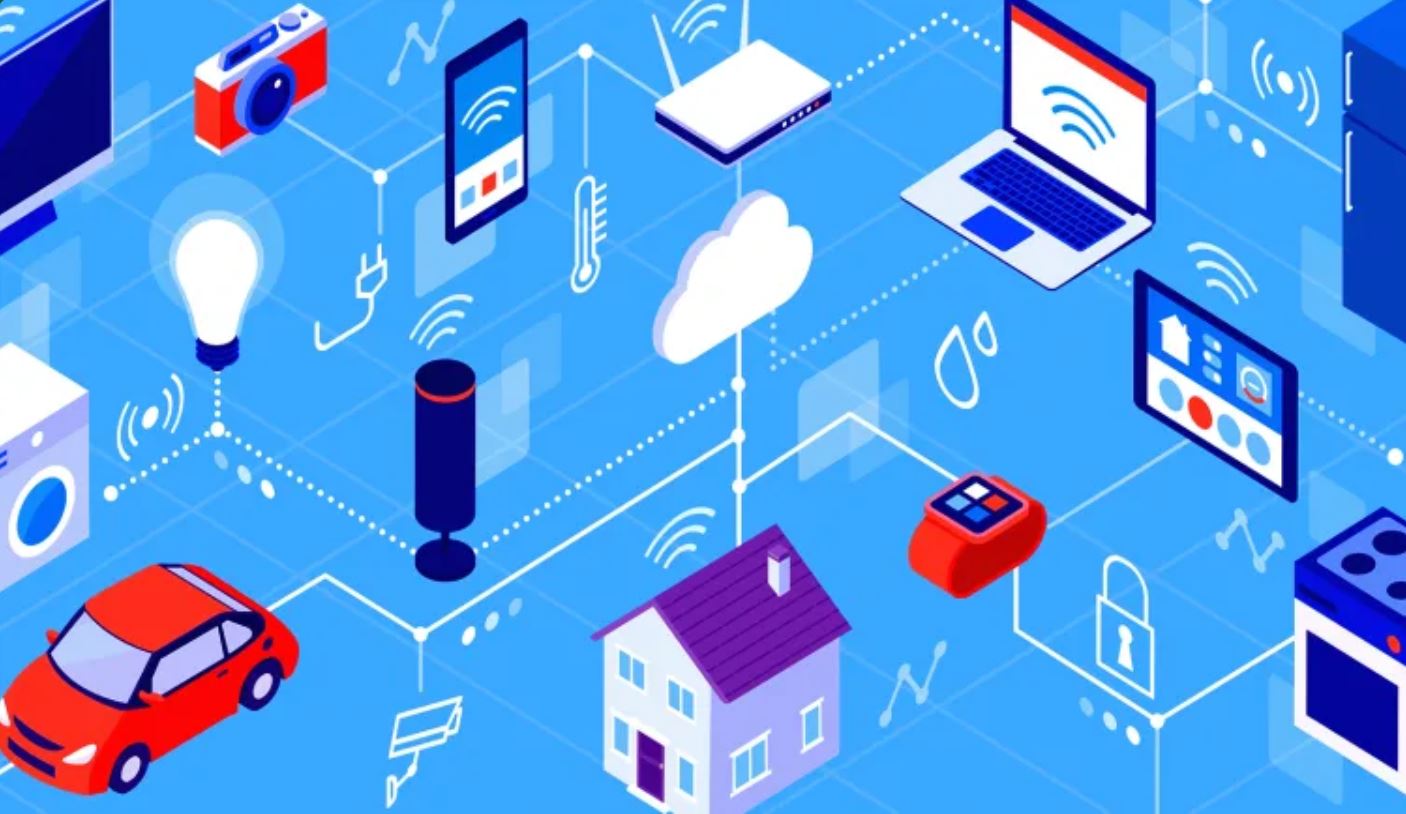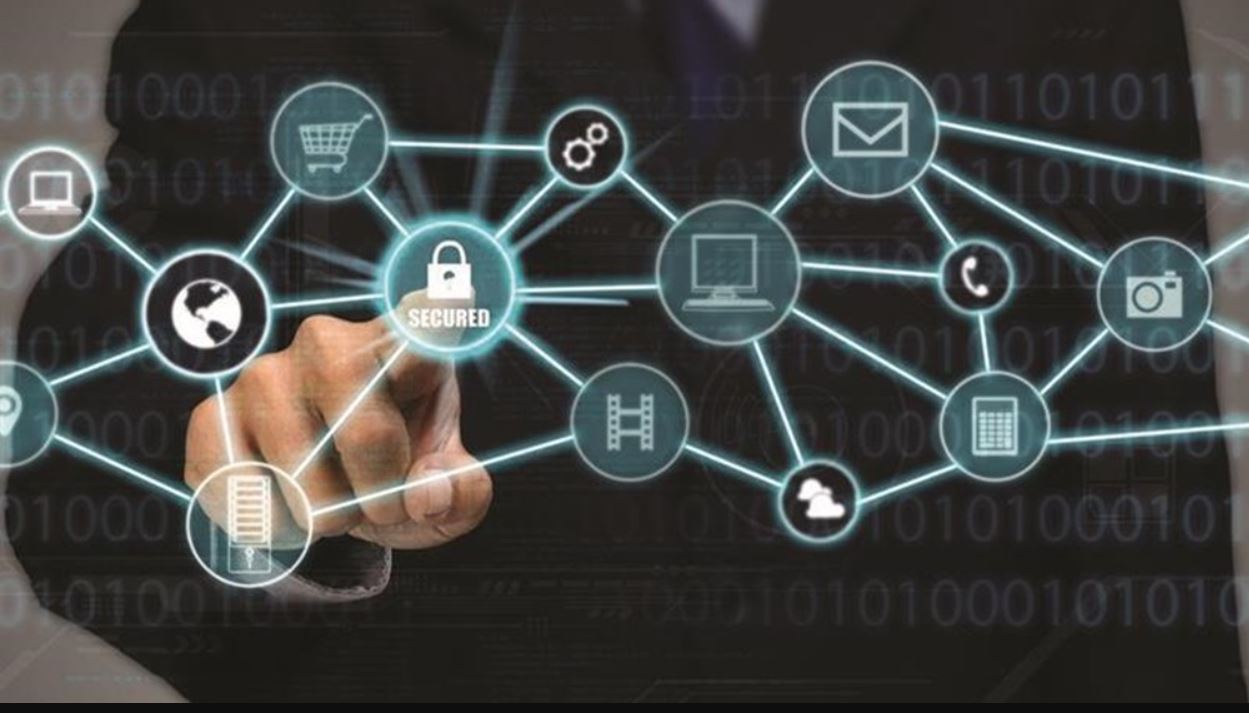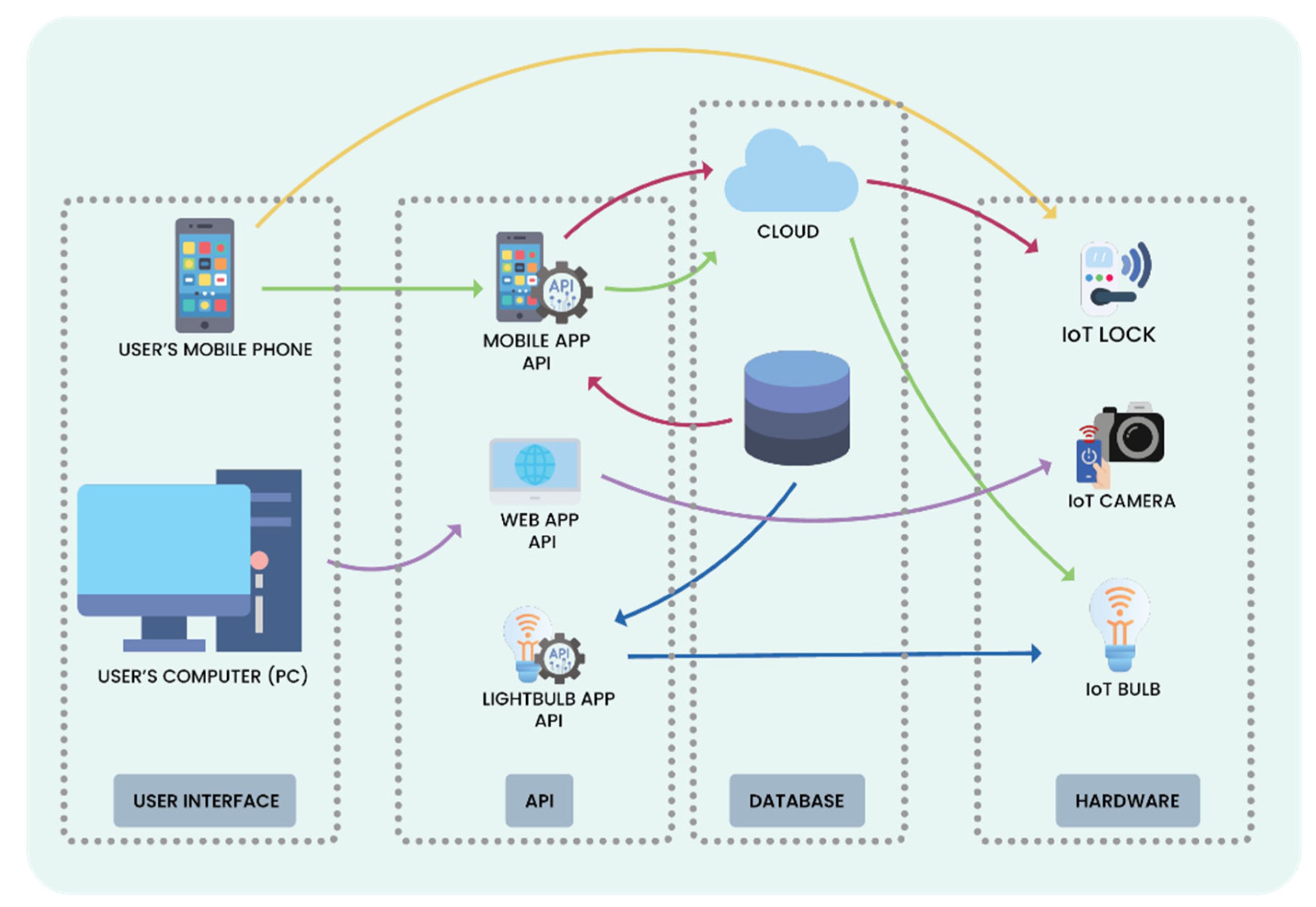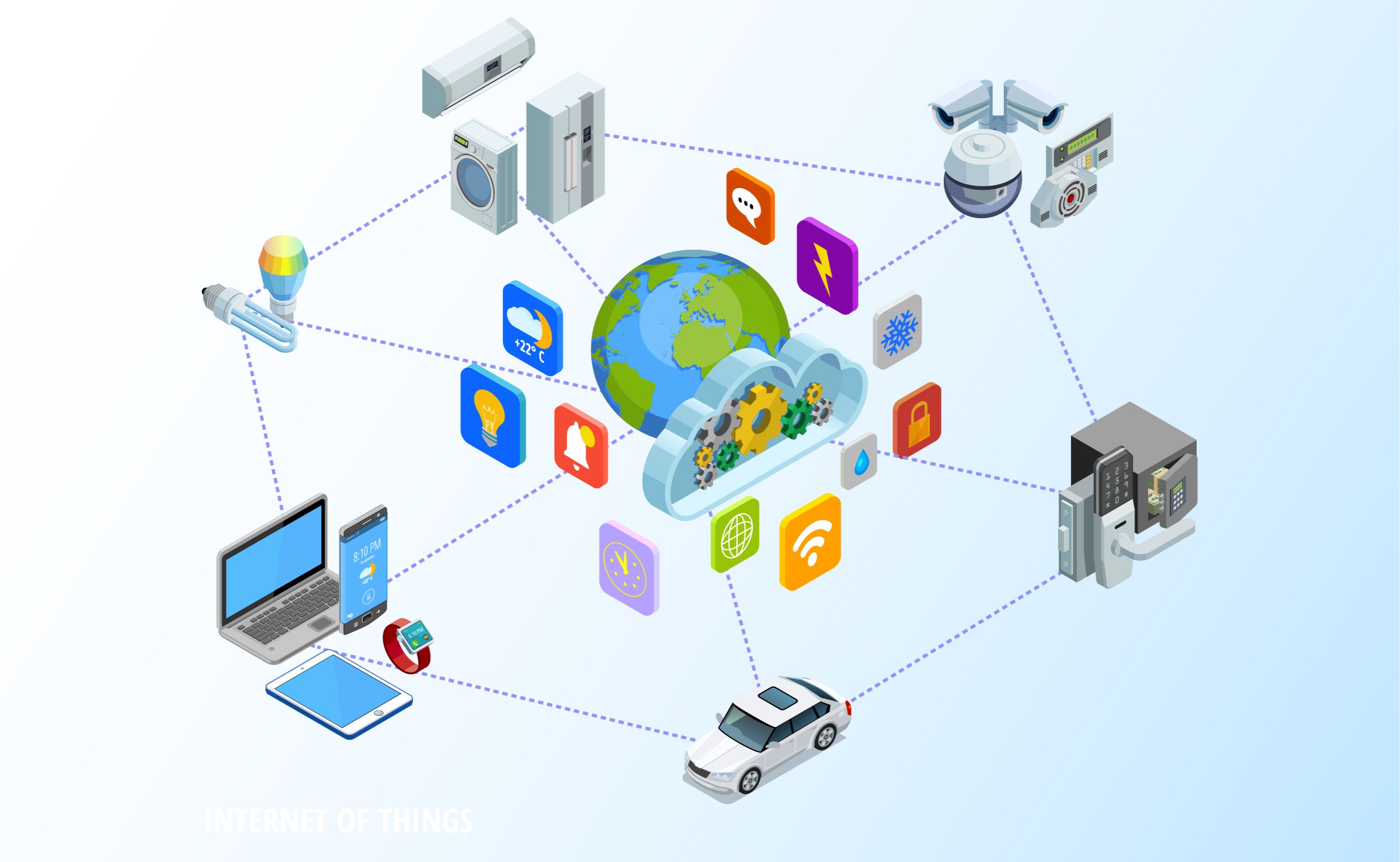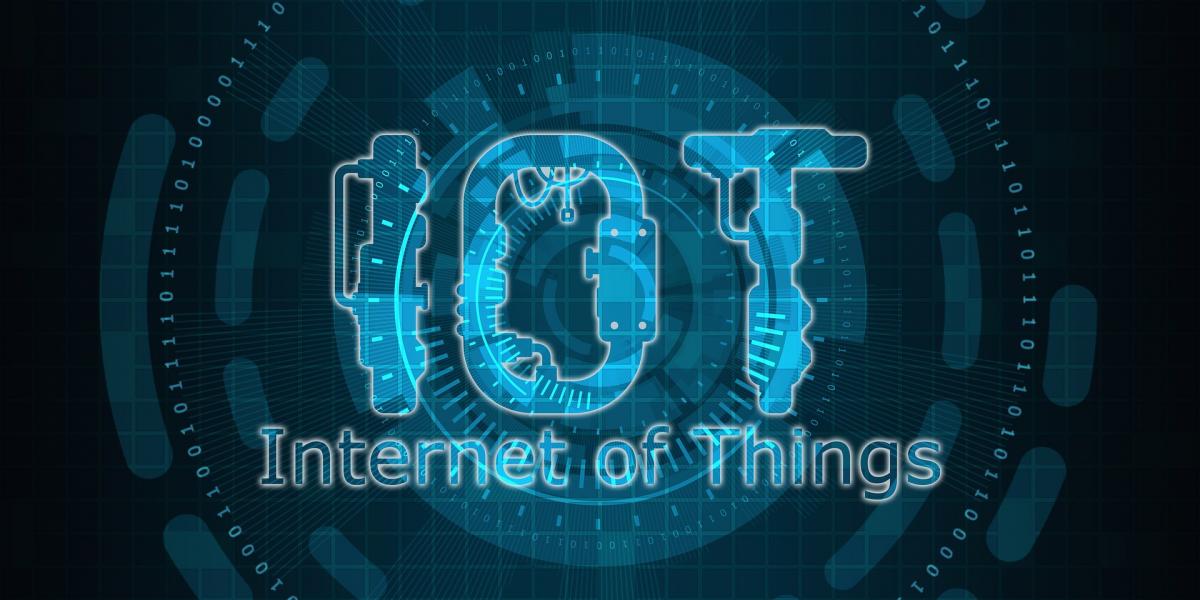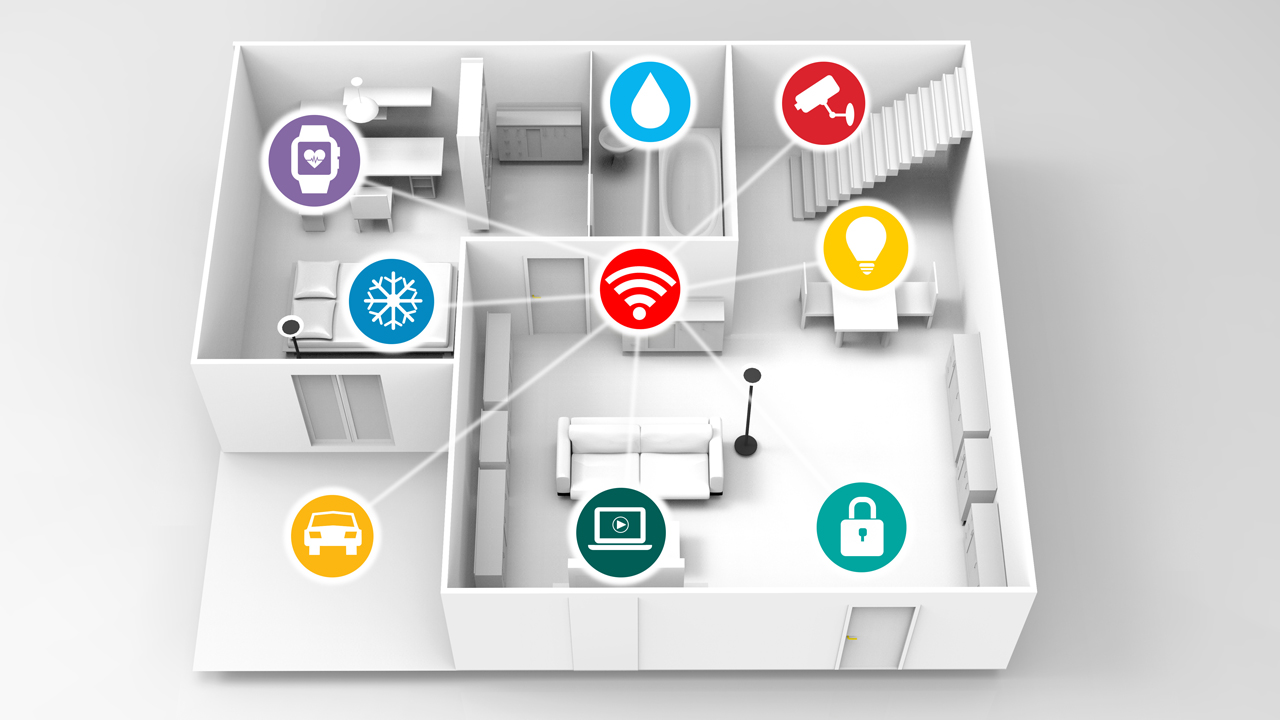Introduction
Welcome to the ever-progressing world of the Internet of Things (IoT), where devices are interconnected and communicate with each other seamlessly. From smart homes to industrial machinery, IoT networks have revolutionized the way we interact with technology. As more and more devices become a part of this interconnected web, it becomes crucial to ensure the security and functionality of these devices. One way to achieve this is by regularly checking the data on devices connected through an IoT network.
By monitoring the data flowing through the IoT network, you can gain valuable insights into the performance, health, and security of your devices. This not only helps in proactively detecting and mitigating any potential issues but also allows you to optimize the overall functionality of your IoT ecosystem.
In this article, we will explore in detail the importance of checking data on devices connected through an IoT network. We will also discuss various methods that can be utilized to efficiently monitor and analyze the data flowing through an IoT network.
What is an IoT Network?
An IoT network, short for Internet of Things network, refers to a system consisting of interconnected devices that communicate and exchange data with each other over the internet. These devices can range from everyday objects such as smart thermostats, wearables, and home appliances to complex industrial machinery and infrastructure.
IoT networks enable devices to gather and share data, enabling users to monitor, control, and automate various processes remotely. This interconnectedness brings convenience, efficiency, and new capabilities to different sectors, including healthcare, agriculture, transportation, and manufacturing.
IoT networks rely on several key components to function effectively. These include:
- Sensors and Actuators: Devices equipped with sensors capture data from their surroundings, while actuators enable them to perform physical actions based on received instructions.
- Connectivity: IoT devices use various connectivity technologies such as Wi-Fi, Bluetooth, Zigbee, or cellular networks to communicate with each other and the central system.
- Gateways: Gateways act as intermediaries between IoT devices and the internet, enabling secure data transmission and protocol translations.
- Cloud Infrastructure: IoT networks often leverage cloud platforms to store and process the massive amounts of data generated by interconnected devices.
- Software Applications: These applications provide users with a user-friendly interface to monitor and control the connected devices, as well as analyze the gathered data.
Overall, IoT networks enable seamless communication and data exchange between devices, unlocking opportunities for automation, efficiency improvements, and new innovative services across various industries.
Why is it important to check data on devices connected through an IoT network?
Monitoring and checking the data on devices connected through an IoT network is of utmost importance due to several key reasons:
- Security: As the number of connected devices continues to grow, so does the potential for security breaches. By regularly checking the data on IoT devices, you can identify any suspicious activities or anomalies that may indicate a security threat. This allows you to take timely action to prevent unauthorized access, data breaches, or malicious attacks.
- Performance Optimization: Monitoring the data on devices helps you assess their performance and identify areas of improvement. By analyzing the data, you can detect performance bottlenecks, troubleshoot issues, and optimize the operation of your IoT ecosystem, ensuring that devices function seamlessly and efficiently.
- Maintenance and Predictive Analytics: Checking the data on IoT devices allows you to monitor their health and performance in real-time. By analyzing device metrics, you can proactively detect any signs of potential failure or maintenance requirements. This enables you to conduct preventive maintenance, reducing downtime and optimizing the lifespan of your devices.
- Data Insights: Data collected from IoT devices can provide valuable insights for businesses. By analyzing the data, you can uncover patterns, trends, and correlations that can aid in decision-making, improve operational efficiency, and identify new business opportunities.
- Compliance and Regulations: Depending on the industry or sector, there may be specific compliance and regulatory requirements that need to be met. By monitoring and checking the data on IoT devices, you can ensure that you comply with these regulations, maintain data privacy, and safeguard sensitive information.
By regularly checking the data on devices connected through an IoT network, you can ensure the security, performance, and reliability of your IoT ecosystem. It allows you to proactively address any issues, optimize performance, and make informed decisions based on the insights gained from the data. Thus, data monitoring is a crucial aspect of managing and maintaining an effective IoT network.
Methods to check data on devices in an IoT network
There are several methods available to effectively check the data flowing through devices connected in an IoT network. Let’s explore some of the commonly used methods:
- Device-specific mobile applications: Many IoT devices come with their own dedicated mobile applications. These applications allow users to monitor and control the connected devices directly from their smartphones or tablets. They provide real-time data updates, alerts, and notifications, enabling users to check device status, adjust settings, and analyze data on the go.
- IoT platform and cloud services: Utilizing an IoT platform or cloud service can centralize data management and enable efficient monitoring of connected devices. These platforms offer features such as data visualization, reporting, and analytics tools that allow you to check and analyze the data collected from your IoT devices. They often provide dashboards and customizable widgets to track device metrics, set alarms, and generate insights.
- Network monitoring tools: Network monitoring tools provide an overarching view of the entire IoT network and its connected devices. These tools monitor network traffic, track device connectivity, and analyze data in real-time. They can identify any abnormalities, network bottlenecks, or security breaches, allowing you to promptly take necessary actions.
- Device logs and event data: IoT devices often generate logs and event data that capture important information about their activities and performance. Monitoring and analyzing these device logs can provide valuable insights into device behavior, diagnose issues, and identify patterns or trends. This method can be particularly useful for troubleshooting and maintenance purposes.
It is essential to choose the method(s) that align with your specific needs and IoT infrastructure. Some networks may require a combination of different methods to ensure comprehensive monitoring and data analysis. Regularly checking the data on devices can help optimize their performance, enhance security, and drive better decision-making based on the insights gained from the data.
Device-specific mobile applications
One of the most convenient ways to check data on devices connected through an IoT network is by utilizing device-specific mobile applications. Many IoT devices come with their own dedicated mobile apps that enable users to monitor and control the connected devices directly from their smartphones or tablets.
Device-specific mobile applications offer a user-friendly interface that provides real-time updates, alerts, and notifications related to the connected devices. Users can easily check the status of their devices, adjust settings, and analyze the data collected by the IoT devices. These applications often have intuitive dashboards and customizable widgets that display device metrics and provide insights into device performance.
By utilizing device-specific mobile applications, users have the flexibility to access and monitor their IoT devices from anywhere, as long as they have an internet connection. This allows for seamless remote monitoring and control, ensuring that users stay connected with their devices whether they are at home, in the office, or on the go.
Device-specific mobile applications also enable users to set up alerts and triggers based on specific device metrics. For example, users can receive notifications if a temperature sensor exceeds a certain threshold or if a motion sensor detects movement in a restricted area. These alerts help users stay informed about any critical changes or events in real-time.
Furthermore, device-specific mobile applications often provide data visualization features that allow users to analyze and interpret the collected data. They may include graphs, charts, or historical data views to help users identify patterns, trends, and correlations. These insights can be valuable for optimizing device performance, identifying energy consumption patterns, or understanding user behavior.
It is important to note that not all IoT devices have their own dedicated mobile applications. Some devices may require integration with third-party platforms or services to enable mobile access and monitoring. In such cases, it is crucial to ensure compatibility and seamless integration between the device, the mobile app, and any additional services or platforms.
Overall, the availability of device-specific mobile applications provides a convenient and efficient way to check data on devices connected through an IoT network. They offer real-time updates, remote monitoring and control, data visualization, and insights into device performance. By utilizing these applications, users can ensure seamless connectivity and effectively manage their IoT devices.
IoT platform and cloud services
To efficiently check data on devices connected through an IoT network, many organizations turn to IoT platforms and cloud services. These platforms provide a centralized environment for managing and monitoring IoT devices, as well as analyzing the data they generate.
An IoT platform acts as a middleware that brings together various components of an IoT ecosystem. It enables seamless integration with different devices, protocols, and data sources, allowing for easy management and coordination of the connected devices.
IoT platforms offer a range of features and functionalities that facilitate data checking and analysis. They provide dashboards and customizable widgets that display real-time device metrics, alerts, and notifications. Users can access these dashboards through web interfaces or mobile applications, ensuring convenience and flexibility in monitoring devices.
With IoT platforms, users can set up rules and triggers based on specific device data. For example, users can configure rules to trigger an alert if a temperature sensor reports an abnormal reading or if a motion sensor detects unexpected movement. This allows for proactively monitoring devices and taking immediate action when necessary.
Additionally, IoT platforms often provide advanced data analytics capabilities. They enable users to collect, store, and process massive amounts of data generated by IoT devices. This data can be analyzed using various techniques such as machine learning and predictive analytics to derive valuable insights.
Cloud services play a crucial role in supporting IoT platforms by providing scalable and reliable infrastructure. Cloud platforms offer storage and computing resources that allow for efficient data processing and analysis. They ensure data security, as well as easy scalability to accommodate the increasing number of IoT devices and the data they generate.
Through IoT platforms and cloud services, users can analyze data from multiple devices, identify patterns, trends, and anomalies, and gain insights into device performance, user behavior, and operational efficiencies. These insights can help optimize resource allocation, improve decision-making, and identify opportunities for process optimization and automation.
Furthermore, IoT platforms often provide APIs (Application Programming Interfaces) that allow integration with third-party applications or services. This enables users to connect their IoT devices with other business systems, such as customer relationship management (CRM) or enterprise resource planning (ERP) platforms, further enhancing the data analysis capabilities and overall operational efficiency.
In summary, IoT platforms and cloud services provide a comprehensive solution for checking data on devices connected through an IoT network. They offer features such as real-time monitoring, alerts, data analytics, and integration capabilities. By utilizing these platforms, organizations can effectively manage and analyze data from multiple IoT devices, enabling better decision-making and optimization of their IoT ecosystem.
Network monitoring tools
Network monitoring tools play a crucial role in checking data on devices connected through an IoT network. These tools provide an overarching view of the entire network infrastructure, allowing users to monitor and analyze the data flow between devices, gateways, and the central system.
Network monitoring tools monitor network traffic, track device connectivity, and analyze data in real-time. By capturing and analyzing network packets, they can identify any abnormalities, network bottlenecks, or security breaches that may affect the performance or security of the IoT network.
With network monitoring tools, users can gain insights into various network parameters such as bandwidth usage, latency, packet loss, and device response times. These metrics provide valuable information about the health and performance of the IoT network infrastructure.
Network monitoring tools often utilize graphical interfaces or dashboards to present real-time data and metrics. Users can configure thresholds and receive alerts or notifications when specific network conditions are met. This allows for proactive monitoring and prompt responses to network issues before they escalate.
Additionally, network monitoring tools can provide historical data and trends, enabling users to analyze network performance over time. This information helps identify patterns and anomalies, assisting in troubleshooting, capacity planning, and optimizing network resources.
Some advanced network monitoring tools also offer features such as network mapping, device discovery, and visualization of the IoT network topology. This allows users to visualize the interconnected devices, their relationships, and the flow of data between them, aiding in network optimization and troubleshooting.
Furthermore, network monitoring tools can integrate with other systems and platforms, such as security information and event management (SIEM) or intrusion detection systems (IDS). This enables more comprehensive monitoring and analysis by correlating network data with security events and alerts.
It is important to choose network monitoring tools that align with your specific IoT network requirements. Look for tools that support the protocols and devices used in your network and provide the necessary features for monitoring, analysis, and alerting.
By utilizing network monitoring tools, users can ensure the performance, reliability, and security of their IoT network. These tools allow for real-time monitoring, analysis of network traffic, and detection of any issues or threats. By proactively identifying and addressing network problems, organizations can maintain the smooth operation of their IoT network and optimize overall performance.
Device logs and event data
Device logs and event data are valuable sources of information to check data on devices connected through an IoT network. IoT devices often generate logs that capture important details about their activities, events, errors, and performance. Analyzing these logs and event data provides insights into device behavior, aids in troubleshooting, and helps identify patterns or trends.
Device logs record a wide range of information, including device status, sensor readings, configuration changes, and error messages. By regularly monitoring these logs, users can keep track of device operations and identify any anomalies or abnormalities that may indicate potential issues.
Event data, on the other hand, captures specific occurrences such as device startup, shutdown, firmware updates, or user interactions. These events can provide valuable context for understanding device behavior and its impact on the overall IoT network.
Device logs and event data can be accessed directly from the devices or through designated management interfaces. Users can review the logs manually or use automated tools to process and analyze the data for insights.
Monitoring and analyzing device logs and event data allow users to:
- Identify and troubleshoot issues: By reviewing device logs, users can quickly identify and address any device-specific issues or errors. This helps in troubleshooting and resolving problems promptly.
- Gain insights into device performance: Analyzing device logs over time can provide insights into device performance and operation. By tracking metrics such as response times, sensor readings, or resource utilization, users can identify performance bottlenecks or patterns that require attention.
- Enable predictive maintenance: Device logs and event data can be used to predict maintenance requirements. By monitoring usage patterns, error occurrences, or performance degradation, users can proactively schedule maintenance activities, reducing downtime and optimizing device lifespan.
- Support compliance and auditing: Device logs can play a critical role in meeting compliance and auditing requirements. They provide an audit trail of device activities, configurations, and events, ensuring transparency and accountability.
It’s important to note that managing and analyzing device logs and event data can be a complex task, especially in large-scale IoT networks with numerous devices generating substantial amounts of data. Utilizing log management systems and automated analysis tools can streamline the process and help extract valuable insights efficiently.
By leveraging device logs and event data, users can gain deep visibility into device behavior, troubleshoot issues, optimize performance, and ensure compliance in their IoT network.
Conclusion
Checking data on devices connected through an IoT network is crucial for ensuring the security, performance, and functionality of the IoT ecosystem. By monitoring and analyzing the data, users can proactively detect issues, optimize device performance, and make informed decisions based on the insights gained.
Various methods are available to check data on IoT devices, including device-specific mobile applications, IoT platforms and cloud services, network monitoring tools, and device logs/event data analysis.
Device-specific mobile applications provide a convenient way to access and monitor IoT devices from anywhere, offering real-time updates, control, and data visualization. IoT platforms and cloud services offer centralized management, data analysis, and integration capabilities, enabling efficient monitoring and analysis of data from multiple devices.
Network monitoring tools track network traffic and device connectivity, providing insights into network performance and security. Device logs and event data capture device activities, errors, and events, helping with issue identification, troubleshooting, and predictive maintenance.
By utilizing these methods, organizations and individuals can ensure the security, optimize the performance, and leverage the full potential of their IoT networks. Regularly checking the data on devices helps in identifying and addressing security threats, optimizing device performance, and improving operational efficiency.
In an ever-expanding IoT landscape, staying informed and proactive is crucial. By implementing effective data checking practices, users can make the most of their IoT network, drive innovation, and achieve their desired outcomes.







